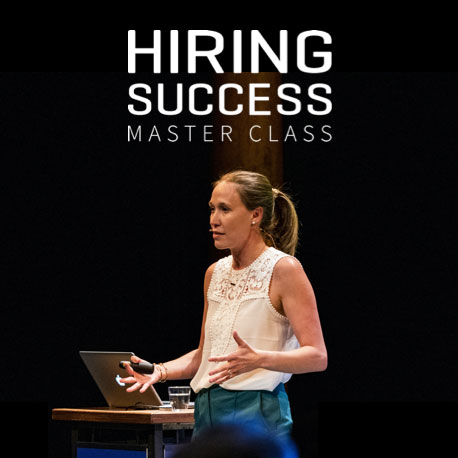In his award-winning book, The Ten Principles Behind Great Customer Experiences, Matt Watkinson gives a definitive guide to creating branded moments for customers. I believe that similar elements enthrall applicants and new hires. Here, I’ll expand on Watkinson’s work, translating its insights into actionable principles that talent acquisition teams can use.
1. Great candidate experiences reflect the candidate’s identity.
Talent acquisition appreciates the employer brand and employee value proposition (EVP). But, a memorable hiring experience is candidate-centric and specific. Experiences with the brand reinforce something about the talent’s self-image. At this deeper level, truly memorable employer brands are created.
For example, when Apple launched its breakthrough “Mac vs. PC” campaign, they differentiated themselves. Appealing to a small segment of the population, they communicated unique values. This created a strong brand identity. A niche audience could identify, relate, and become loyal. Note that in creating this identity, they did not try to meet everyone’s needs. Instead, Apple focused on a few, key individuals who were right for their product.

The same can be said for employer brands. Employer brands must speak to what makes their candidates unique and special. You can do this by demonstrating the values your organization strives to uphold. Ideally, they mirror those of your ideal candidates. Whatever the case is, you want to show candidates that you can relate to them on a plane deeper than a mere exchange of compensation for services rendered.
2. Great candidate experiences satisfy higher objectives.
The true needs of employees are financial compensation and security. There may even be other surface-level needs like proximity to home or a flexible schedule. But, these should not be your focus. Memorable candidate experiences serve bigger needs.
Don’t take your candidates word for it because if you survey them, they will tell you they want:
- Greater opportunities for advancement,
- Better compensation and benefits,
- More challenging and rewarding work,
- Better fit for their skill set,
- More even work/life balance, and
- Greater learning opportunities.
These are surface needs. Barely scratching the surface of a unique candidate’s real, personal motivation for applying to your organization, employer brands that stick to such reportage will fail to create an exceptional candidate experience. For each surface need, there is a deeper objective the potential employee seeks. Root it out if you want to impress them with a shared connection.

Imagine a candidate expresses they “want to earn better compensation and benefits in their new role.” Ask what the deeper objective is. You might find they want to afford a better education for their children. Or, they want to create a better life for themselves by buying their own home.
As Watkinson puts it in his book, “Wants and needs are derivative, it is satisfying the higher objective behind them that is the foundation on which great customer experiences are built.” The same is true in delightful hiring experiences.
Show that your company can satisfy your potential employees’ higher objectives. This takes thought to consider what the motive is behind such simply stated desires as “more pay” or “better opportunities.” Then, take the following steps:
- showcase employee “stories,”
- display corporate social responsibility (CSR),
- highlight volunteering opportunities, and finally
- connect candidates with current employees who have met their deeper objectives.
3. Great candidate experiences set and meet expectations.
Great experiences set clear expectations and meet them. When somebody applies to work in your organization, they upload their CV or resume. How many companies define and meet the expectation of when to respond? This is a simple intervention for most talent acquisition professionals who can automate responses to applications, but many companies miss it.
Without setting and meeting clear expectations, candidates are likely to experience painful “dissonance.” (Dissonance is the difference between expectations and reality.) Consider the simple case of a response to an application. If you say you’ll reach out in 14 days, and you contact them in 20, this creates a painful dissonance between expectations and reality. But, if you say you’ll reach out in 14 days, and you contact them in 10, this creates a positive, pain-free experience.

Think about what your company can deliver to candidates and follow through. If you set specific expectations, you can also hold yourself accountable to an efficient and effective hiring process. Meeting your expectations diffuses dissonance in a process that often ends with the candidate not getting hired. (That can be painful in itself.)
Additionally, you can set and meet expectations by minding the Peak End Rule. The Peak End Rule is a concept in psychology that explains how people remember two parts of any given event: they remember the absolute best part of the event and how it ended. Since endings in the hiring process are often negative, creating a “peak” in the process becomes vitally important.
Case in point, Sonos’ interview process includes a peak and an end at their Amsterdam office. When they bring candidates in, they immediately ask for their favorite song. As they enter the interview room, candidates hear an amazing blast of their favorite song. And, as an end, if they didn’t get the job, they send candidates a code to receive 50% any Sonos speaker.
4. Great candidate experiences are stress-free.
Talent acquisition professionals know that candidates stress about applications, interviews, and the entire process. Stress leads to errors which leads to a poor brand experience for the applicant. We can all cut stress and errors by designing the hiring process to soothe and smooth out mistakes.

In Japanese manufacturing, there is a concept called poka-yoke. It means “mistake-proofing” or “error prevention.” You find this concept at work in modern vehicle design. You must press the clutch down before the engine will start. This prevents jumping by designing the process to remove errors. Such design efforts and considerations remove the possibility of error before it becomes a problem.
In an interview process, the same concept applies. Sending applicants interview guides can help them cut stress and reduce errors. Alongside confirmation, you can provide parking tips for arriving on time. Many more automated “designs” can apply to your unique hiring process. These are mere suggestions to get you started on dreaming up unique “mistake-proofing” for your company.
5. Great candidate experiences indulge the senses.
Engaging the senses reduces stress and improves memorability. For instance, it is demonstrated in mindfulness techniques that engaging the senses reduces anxiety and improves a person’s ability to stay present. It is another way you can work to “design out” errors caused by stress as well as delight candidates with positive memories.
Just like Sonos, LinkedIn provides a great example. Rather than a generic phone call or email message, LinkedIn sent gold envelopes with cards to to announce their job offers. This created a sensory experience for candidates. Imagine what you can do at your organization to delight the senses like Sonos or LinkedIn.
6. Great candidate experiences give a sense of control.
A sense of control can reduce stress by putting candidates’ preferences first. The hiring process is a tipped power dynamic. It leans in favor of the employer who determines who is and is not a fit for the culture and role. Few candidates enjoy such authority over their future. But, that doesn’t mean that small symbolic gestures of balance cannot be made.

Sometimes these candidate-first gestures are so small that you may neglect them in your hiring process. For those who use automated scheduling tools like Calendly, it can be as simple as allowing a candidate to choose their own interview time. Try to think of more ways to lend candidates your power.
7. Great candidate experiences leave nothing to chance.
Candidate experiences are the sum of a series of small interactions. Together, they create a synergy that can powerfully shift perception surrounding your organization. It means delivering thoughtfulness every step of the way through the hiring process. Think about your hiring process from application to onboarding. Brainstorm ways you can:
- reflect the candidate’s identity,
- satisfy objectives,
- meet expectations,
- reduce stress,
- indulge senses, and
- offer control.
Final Thoughts
To conclude, I want to emphasize a story about John Deere’s candidate experience.
They created a first-day peak in their Asia office. Upon arrival, they welcome you with a massive banner. In your office, there’s a box of chocolates. Your first and only email is from the CEO with a personalized video. You have a lunch meeting with your manager who shares what personally motivates them to work for the company. The entire day is a peak event that creates reassurance about your choice to work at John Deere.
To create memorable candidate experiences, apply these seven simple insights. Strategically and systematically consider each step in the hiring process, and view it from a candidate’s perspective.

 Enroll in the Master Class & earn 6 SHRM credits
Enroll in the Master Class & earn 6 SHRM credits